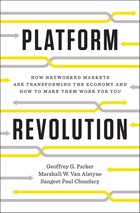The battle between content platforms and ad-blocking technology has reached a new level of sophistication. YouTube's latest anti-adblock measures represent a fascinating case study in how platforms are evolving their technical approaches to protect their advertising revenue streams.
The Technical Innovation Behind Fake Buffering
YouTube's newest strategy involves what appears to be "fake buffering" – a deliberate delay that mimics slow loading times. This isn't random technical incompetence; it's a calculated response that leverages YouTube's complex infrastructure in clever ways.
The implementation works through YouTube's InnerTube API and Google Video Services (GVS), using a proprietary protocol called SABR (Server Adaptive Bit Rate). When the system detects ad-blocking behavior, it instructs the video server to send a "backoff" signal, forcing the client to wait approximately 80% of what the ad duration would have been.
This approach is technically elegant because it doesn't break the user experience entirely – it simply makes ad-blocking less convenient while still being preferable to watching actual advertisements.
The Economics of Attention and Convenience
The fake buffering strategy reveals something profound about the economics of digital content. By implementing a delay that's shorter than actual ad time, YouTube acknowledges that users will tolerate some inconvenience to avoid advertisements, but they're betting that enough friction will push some users toward premium subscriptions.
This creates an interesting value proposition: users can choose between watching ads, experiencing artificial delays, or paying for an ad-free experience. It's a three-tier system that attempts to monetize different user preferences and price sensitivities.
The User Experience Dilemma
What's particularly noteworthy is how users are responding to these measures. Many report that they prefer the buffering delay to actual advertisements, citing the cognitive load and distraction that ads create. This suggests that the primary objection to advertising isn't just time consumption – it's the interruption to focused attention and the often poor quality of ad content.
The platform faces a fundamental challenge: advertising effectiveness depends on capturing attention, but users increasingly view this attention capture as hostile. This tension drives the technical arms race we're witnessing.
Technical Escalation and Future Implications
The current measures represent just one phase in an ongoing technical evolution. More sophisticated approaches could include:
- Server-side ad injection directly into video streams
- Rate-limiting based on playback speed to prevent pre-downloading
- Dynamic content delivery that makes ad-blocking detection more difficult
Each escalation requires more sophisticated counter-measures from ad-blocking technology, creating a continuous cycle of innovation on both sides.
The Broader Platform Economy Question
This technical battle reflects deeper questions about sustainable business models for content platforms. The infrastructure costs for serving billions of hours of video content are enormous, and the money must come from somewhere. The challenge lies in finding models that satisfy creators, platforms, advertisers, and users simultaneously.
Some users are discovering that stepping away from the platform entirely provides unexpected benefits – reduced passive consumption and more time for creative pursuits. This suggests that the attention economy itself might be more fragile than platforms assume.
The Path Forward: Innovation in Revenue Models
The current situation highlights the need for more innovative approaches to platform monetization. Rather than simply making ad-blocking more inconvenient, platforms might explore:
- More granular subscription tiers
- Creator-specific payment models
- Community-funded content initiatives
- Improved ad quality and relevance standards
Conclusion: The Real Battle Isn't Technical
While the technical sophistication of YouTube's anti-adblock measures is impressive, the underlying conflict isn't really about technology – it's about value exchange and user agency. The platform's challenge isn't just detecting ad blockers; it's creating advertising experiences that users don't desperately want to avoid in the first place.
The fake buffering strategy may be a clever technical solution, but it's ultimately a symptom of a broader misalignment between platform business models and user preferences. The companies that will thrive long-term are those that find ways to align these interests rather than simply making resistance more inconvenient.
As this technical arms race continues, the real innovation opportunity lies not in more sophisticated blocking or counter-blocking technology, but in fundamentally rethinking how digital content platforms create value for all stakeholders in their ecosystem.













